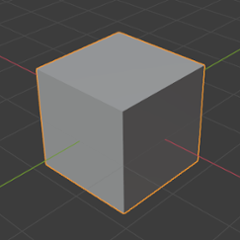Kotlin-math
Set of Kotlin APIs to make graphics math easier to write. These APIs are mostly modeled after GLSL (OpenGL Shading Language) to make porting code to and from shaders easier.
The various types offered by this library are only meant to be value types. Most APIs are therefore exposed as top-level functions and not as methods. For instance:
val v = Float3(1.0f, 3.0f, 4.0f)
val n = normalize(v)
Building the project
Simply run the following command to generate build/libs/kotlin-math.jar:
$ ./gradlew assemble
Types
Vector types:
- Float2, vector of 2 floats
- Float3, vector of 3 floats
- Float4, vector of 4 floats
- Bool2, vector of 2 booleans
- Bool3, vector of 3 booleans
- Bool4, vector of 4 booleans
Matrix types:
- Mat3, 3x3 float matrix
- Mat4, 4x4 float matrix
Vector types
Accessing components
Each vector type exposes its component as properties:
val x = myVector.x
val (x, y, z) = myVector
A vector can also be treated as an array:
val x = myVector[0]
val x = myVector[VectorComponents.X]
The traditional mathematical form with 1-based indexing can be used:
val x = myVector(1)
Property aliases
To improve code readability, the vector types provide aliases for each property, allowing you to choose the most appropriate names:
val (x, y, z) = myPosition.xyz
val (r, g, b) = myColor.rgb
val (s, t) = myTextureCoordinates.st
Swizzling
Vector types also provide different ways to swizzle their components, although in a more limited way than in GLSL. The most obvious use for swizzling is to extract sub-vectors:
val position = Float3(…)
val position2d = position.xy // extract a Float2
val colorWithAlpha = Float4(…)
val rgbColor = colorWithAlpha.rgb // extract a Float3
The get operators allows for more complex swizzling by enabling re-ordering and duplication of the components:
val colorWithAlpha = Float4(…)
val bgrColor = colorWithAlpha[
VectorComponents.B,
VectorComponents.G,
VectorComponents.R
] // re-ordered 3 components sub-vector
Comparing vector types
Vector comparisons follow GLSL rules:
==returns true if all components are equal!=returns true if not all components are equal
In addition you can use component-wise relational operators that return a vector of boolean with the result of each component-wise comparison:
lessThanlessThanEqualgreaterThangreaterThanEqualequalnotEqual
Example:
if (all(lessThan(v1, v2))) {
// …
}
You can also use the following infix operators if you prefer the operator syntax:
ltltegtgteeqneq
Example:
if (any(v1 lte v2)) {
// …
}
Matrix types
Matrices are represented as a set of column vectors. For instance, a Mat4 can be destructured into the right, up, forward and translation vectors:
val (right, up, forward, translation) = myMat4
Each vector can be accessed as a property or by its index:
forward = myMat4.forward
forward = myMat4.z
forward = myMat4[2]
forward = myMat4[MatrixColumns.Z]
Matrix types also offer APIs to access each element individually by specifying the column then row:
v = myMat4.z[1]
v = myMat4[2, 1]
v = myMat4[MatrixColumns.Z, 1]
You can also use the invoke operator to access elements in row-major mode with 1-based indices to follow the traditional mathematical notation:
v = myMat4(2, 3) // equivalent to myMat4[2, 1]
Scalar APIs
The file Scalar.kt contains various helper methods to use common math operations with floats. It is intended to be used in combination with Kotlin 1.2's new float math methods.
